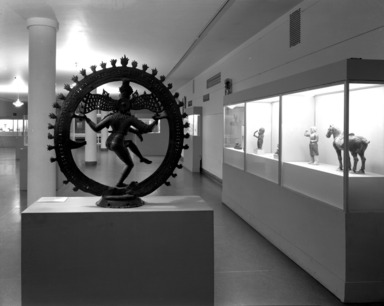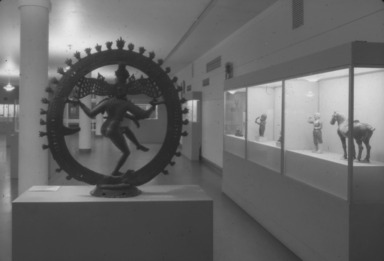

Bury the Dead: Equipment for Eternity, October 21, 1958 through January 04, 1959 (Image: ASI_E1958i001.jpg Brooklyn Museum photograph, 1958)

Bury the Dead: Equipment for Eternity, October 21, 1958 through January 04, 1959 (Image: ASI_E1958i002.jpg Brooklyn Museum photograph, 1958)
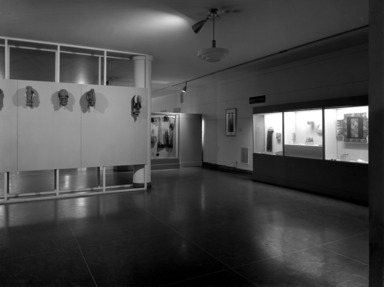
Bury the Dead: Equipment for Eternity, October 21, 1958 through January 04, 1959 (Image: ECA_E1958i001_bw_SL5.jpg Brooklyn Museum photograph, 1958)
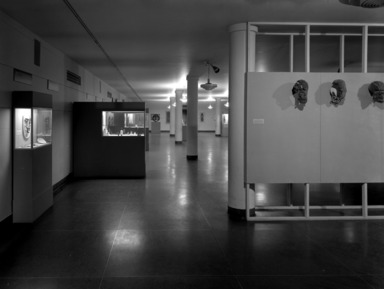
Bury the Dead: Equipment for Eternity, October 21, 1958 through January 04, 1959 (Image: ECA_E1958i002_bw_SL6.jpg Brooklyn Museum photograph, 1958)
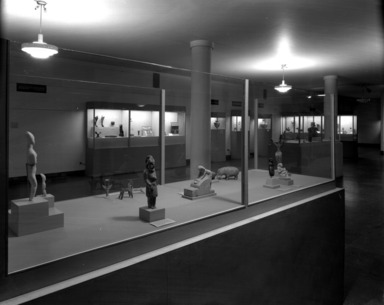
Bury the Dead: Equipment for Eternity, October 21, 1958 through January 04, 1959 (Image: ECA_E1958i003_bw_SL7.jpg Brooklyn Museum photograph, 1958)

Bury the Dead: Equipment for Eternity, October 21, 1958 through January 04, 1959 (Image: ECA_E1958i004_bw_SL8.jpg Brooklyn Museum photograph, 1958)

Bury the Dead: Equipment for Eternity, October 21, 1958 through January 04, 1959 (Image: ECA_E1958i005_bw_SL9.jpg Brooklyn Museum photograph, 1958)

Bury the Dead: Equipment for Eternity, October 21, 1958 through January 04, 1959 (Image: ECA_E1958i006_bw_SL10.jpg Brooklyn Museum photograph, 1958)

Bury the Dead: Equipment for Eternity, October 21, 1958 through January 04, 1959 (Image: ECA_E1958i007_bw_SL11.jpg Brooklyn Museum photograph, 1958)

Bury the Dead: Equipment for Eternity, October 21, 1958 through January 04, 1959 (Image: ECA_E1958i008_bw_SL12.jpg Brooklyn Museum photograph, 1958)
Bury the Dead: Equipment for Eternity
-
Quipu desaparecido (Disappeared Quipu) (Spanish)
Quipu desaparecido es un homenaje a los pueblos antiguos y sus modos de vida, que los españoles intentaron erradicar durante la época colonial. Los tejidos son parte integral de las actividades diarias y la espiritualidad de las culturas andinas, transmitiendo –a través de sus sistemas textiles y el lenguaje de los nudos en quipus— su comprensión de las hebras sagradas que interconectan a todos los seres del cosmos.
La instalación presenta imágenes proyectadas de antiguos tejidos andinos que Vicuña seleccionó de las mundialmente reconocidas colecciones del Museo de Brooklyn y el Museo de Bellas Artes de Boston. Para Vicuña, las proyecciones fantasmales de tejidos representan los cuerpos de los pueblos que los usaron. Una grabación de los cantos de la artista, se combina con las proyecciones de los tejidos antiguos, evocando un coro de voces que se comunican a través de las generaciones.
El título de la instalación, Quipu desaparecido, alude al legado de secuestros y asesinatos políticos perpetuados por un número de dictaduras latinoamericanas del siglo veinte. A las víctimas que desaparecían en los regímenes represivos se les llamaba los desaparecidos. Al adoptar este nombre para su proyecto, Vicuña establece una conexión con la erradicación del quipu a manos de los conquistadores españoles, que se dedicaron a extinguir este altamente codificado y, por tanto, subversivo método de comunicación durante el siglo dieciséis. Si bien la tradición del quipu continúa parcialmente en algunas comunidades andinas, el complejo lenguaje original permanece perdido, y los estudiosos siguen activos investigando y descifrando sus modos de transmitir el conocimiento y la historia.
Quipu desaparecido es parte de un proyecto en lo que Vicuña desde hace varias décadas está sembrando el futuro renacer de un arte social. El proyecto incluye activaciones donde la artista se mueve, sola o junto a otras personas, por entre las fibras y hebras anudadas de la obra.
-
October 20, 1958
The Brooklyn Museum’s major fall exhibition will be based on the uncertainty about life after death, which brought about the filling of tombs with treasures by ancient and primitive peoples and which still causes some persons to fear graveyards. The material things of daily life which went into the graves with the pagan dead, whose souls might still be in their bodies, will be shown in categories such as vessels for food and drink to keep them from being hungry; clothing; vanity equipment and adornment; companions in the form of statuettes of friends, animals and protecting gods. Sections will be devoted to ancestor worship, and to representations of Heaven and Hell and the journey into the Beyond. The arts and artifacts to be shown come from many “houses of eternity" - Egyptian, Oriental, African, American Indian, Latin American, South Pacific, Ainu, etc. - and will be on view from October 21 through through January 4 in the Museum’s Special Exhibitions Gallery on the first floor. The show, many of the objects for which come from the Museum’s own diversified and rich collections, is being organized by Mrs. Elizabeth Riefstahl, Associate Curator Emeritus of the Department of Ancient Art.
In response to popular demand, the Museum’s Mummy which has had so much publicity, will be included in the show. This unknown Egyptian who hoped some 1,500 years ago that his body would never perish, will thus achieve immortality, however limited, in Brooklyn.
Photographs available - Betty Chamberlain
Brooklyn Museum Archives. Records of the Department of Public Information. Press releases, 1953 - 1970. 1958, 043.
View Original -
October 21, 1958
The following quotations are part of the exhibition “Bury the Dead - Equipment for Eternity”
Life is the beginning of man, Death is the end of man. When the end and the beginning are both good, the way of humanity is complete. To pay over-attention to the living and belittle the dead would be to respect them when they have knowledge and disrespect them when they have not. Funeral rites are to make clear the meaning of death and life, to send off the dead with reverence and sorrow.
Hsün Tzu, Confucian philosopher
3rd century, B.C.
_______________________________
If it be thou, O leave me alone! What dost thou wish? See, here is tobacco, here is water, here is beer. Leave me alone, that I may enjoy myself!
African charm against a ghost
_______________________________
We do not believe, we only fear. We fear...the dead and the malevolent ghosts.
Eskimo creed, as quoted to Rasmussen
_______________________________
May the gods show you the good road, that you will meet nothing on the way.
Algonkin Fox, prayer for the dead
_______________________________
Death is easy.
Of what use is life?
To die is rest....
Fijian poem
_______________________________
Farewell, O my child! Do not grieve; do not weep; do not yearn for thy mother....Go thou forever! Farewell forever!
Maori charm against the ghost of a child
_______________________________
One should not cry. When a body is laid in the ground, there is no hope of its return.
Winnebago funeral oration
_______________________________
The span of earthly things is as a dream; but a fair welcome is given him who has reached the West.
Egypt, about 1400 B.C.
_______________________________
Make fair thine house of the West and stately thy palace in the necropolis, even as one that is just, as one that hath done right.
Egypt, about 1400 B.C.
_______________________________
O grave, thou art built for festivity, thou art founded for what is fair!
Song for a funeral,
Egypt, about 1200 B.C.
_______________________________
Burials of the past are footnotes to the history of mankind. Passer by, the bones of a man pray thee. “Pour wine into the cup, drink and give me thereof.”
Roman epitaph
_______________________________
Spend the day merrily. Put unguent and fine oil to thy nostrils and garlands and lotus flowers on thy beloved. Set music and singing before thy face...bethink thee of joy until that day when thou reachest port in the land that loveth silence.
Banquet song from Egyptian tomb,
about 1400 B.C.
_______________________________
Offer water to thy father and thy mother, who rest in the desert valley... omit not to do it, that thy son may do the like for thee.
The Wisdom of Ani, Egypt,
about 1300 B.C.
_______________________________
Spend the day happily and weary not thereof! Lo, none can take his goods with him. Lo, none that hath departed can come again.
Song of a Harper, from an Egyptian
tomb, about 1400 B.C.
_______________________________
More eagerly I drink and drink again in this, my tomb, because I am obliged to sleep and dwell here!
Roman epitaph
_______________________________
It is against common sense to deck the house of the living and not to give the same care to the house which we must inhabit for a longer time.
Petronius, The Banquet of Trimalchio, 1st century, A.D.
_______________________________
Weep not; for of what use is weeping? Rather venerate me, for I am now a divine star, which shows itself at sunset.
Roman epitaph for a young man
_______________________________
Articles used in life are put into the grave, as if the deceased were only moving house. Only a few things are taken, not all. They are to give the appearance, but are not for practical use.
Hsün Tzu, Confucian philosopher,
3rd century B.C.
_______________________________
His duration is eternity and his boundary everlastingness.
Egypt, Pyramid texts
_______________________________
I was not. I was. I am not. I do not care.
Roman epitaph
_______________________________
I laugh at illusions and slumber softly.
Roman epitaph of an actor
_______________________________
Suns can set and rise again, but we, when our brief light is extinguished, must sleep for an eternal night.
Catullus, Roman poet,
1st century B.C.
_______________________________
Do not linger by the way. Never look back, but keep ever on. The path you follow leads straight to the place where the sun goes down.
Algonkin Fox, prayer for the dead
______________________________
We part now and you are taken from our sight, but we shall soon meet again to look upon each other. Our Maker has called you to his house. Thither we shall follow.
Iroquois, A mother’s farewell to her son
______________________________
The soul goes to Indra’s heaven, where life is just as in Bali, but free from all trouble and illness.
Religious text from Bali
______________________________
A man’s life on this earth is but an incident in the long process of the soul’s evolution.
Religious text from Bali
______________________________
Even as the moon dies and, having bathed in the sea of the Great God, returns to this world again young and beautiful, so let man die and revive.
Maori poem
_____________________________
All things of earth know Death. All mankind must traverse the broad path of the Great God, for Death is universal.
Maori poem
_____________________________
Go first, I afterwards. Do not give rain. Do not give storms. Do not give lightning thunder.
Dirge of the Kintak Bong,
Malay Peninsula
_____________________________
Man shall die and return to the Earth Mother for all time, even that he may be mourned and wept for.
Maori poem
Brooklyn Museum Archives. Records of the Department of Public Information. Press releases, 1953 - 1970. 1958, 039-42.
View Original -
October 20, 1958
Many material things of daily life found in the graves of ancient and primitive peoples, and providing a most important key to the history of mankind, will form the major fall exhibition at the Brooklyn Museum, from October 21 to January 4. The objects - from Egypt, the Far East, Africa, the South Pacific, the Ainu tribes of northern Japan and the numerous Indian tribes of North and South America - show a surprising similarity of purpose despite the widely diverse civilizations represented. They represent the needs of the lonely spirit to be clothed, fed, adorned, accompanied and protected, according to widespread pagan beliefs; they tell much about daily life and customs, about economic, s[oc]ial, religious and sometimes even political conditions. Mrs. Elizabeth Riefstahl, Associate Curator Emeritus of the Department of Ancient Art, is selecting and installing the objects, many of which come from the Museum’s own rich collections.
Commenting on the motivation for this custom of filling tombs with many arts and artifacts, Mrs. Riefstahl says: “Belief in a life after death is deeply rooted in human nature. Most peoples, however primitive, have believed in a continued existence of the spirit in the heavens or under the earth or beyond the sea or back of the setting sun. But one can never be quite sure. It is very difficult to conceive of a soul separated from the body, the familiar tangible expression of a personality. After death that body is buried and turns to dust, but perhaps the soul has a dual existence, living at once in some remote happy hunting ground and in the grave where the body lies. Perhaps it has the same cravings, the same needs as living men. And perhaps it will be angry if they are not satisfied.”
The exhibition begins with objects connected with funeral ceremonies and with the embellishment of the body. There are scenes depicting mourners, such as a 7th-century B.C. Egyptian bas-relief of women - many of them paid professionals - tearing their garments, disheveling their hair, casting ashes on their heads, gestures still employed in today’s Mohammedan Egypt. There are masks worn in primitive funeral processions, such as the 19th-century Malagan mask from New Ireland which was supposed to contain the very powerful spirit of the dead. There are grave clothes in which the dead were buried, such as the painted cartonnage which will be shown along with the Museum’s famous mummy of ca. 350 A.D. which it originally covered. It can now be seen for the first time that the mask - of a youthful person - bears no resemblance to the elderly face of the actual mummy, for this was doubtless a piece of stock equipment supplied by the embalmer. There are Chinese Han Dynasty sculptured pillars with human grotesques, which served as posts at the entrance to a grave chamber.
Food and drink were considered fundamental needs for the dead of most of these peoples, and many containers are shown, as well as effigy offerings such as a pre-Columbian Mexican puppy in pottery probably intended as food for the deceased on his journey. Ornate gold jewelry made especially for burials represents the principal offerings to the dead in ancient Colombia. Essential to both men and women of ancient Egypt for tomb equipment were eye-paints and ointments and mirrors for applying them, such as a 14th-century B.C. bronze mirror shown, with handle in the form of a nude serving maid.
Although in early times it was frequently customary when a great man died to sacrifice his wives, concubines, servants, horses and cattle to keep him company in the future world, this wasteful custom was largely discontinued later and sculptured figures substituted. Many such sculptures are shown, including some outstanding T’ang equestrian figures and their mounts in terra cotta, and a striking 19th-century Nigerian figure of an executioner who is depicted as having just cut off the head of a victim executed to accompany a Benin king in after life. Even the deceased himself was sometimes represented in sculpture by the Egyptians, to act as a possible alternate refuge for his soul.
In the section of the exhibition devoted to ancestor worship is an unusual Egyptian bust of about 1300 B.C. which was set up in a dwelling to be worshiped as a household guardian - a practice anticipating by many centuries the Roman veneration of ancestors in the form of lares at every hearth to guard the home. Ancestor worship plays a larger part in many other religions and is particularly manifest in some of the old and modern primitive figures shown. Even Aristotle considered it “extremely unloving” to deny that ancestors are interested in the fortunes of their descendants.
Representations of Heaven and Hell and the Journey into the Beyond also have their place. Every good Egyptian longed to be buried at Abydos, the legendary burial place of Osiris, Lord of the Dead, who himself died and rose again into life. So there is a representation of a symbolic journey on the Nile to the god’s resting place; in this relief of the 7th century B.C. the deceased are offered food for the voyage by an attendant: bread, cakes, leeks, a goose and jars of wine wreathed with lotus. A remarkable head of Osiris is shown for the first time, having just been acquired by the Museum. It is a wooden head probably from the Ptolemaic Period.
Mrs. Riefstahl has, through much patient research, assembled 30 pertinent quotations from all civilizations which appear in the exhibition as placards around the tops of the gallery walls. Examples of these revealing and entertaining sayings are as follows:
Life is the beginning of man, Death is the end of man. When the end and the beginning are both good, the way of humanity is complete. To pay over-attention to the living and belittle the dead would be to respect them when they have knowledge and disrespect them when they have not. Funeral rites are to make clear the meaning of death and life, to send off the dead with reverence and sorrow.
-Hsun Tzu, Confucian philosopher, 3rd century, B.C.
Death is easy. Of what use is life? To die is rest....
-Fijian poem
I was not. I was. I am not. I do not care.
-Roman epitaph
Spend the day happily and weary not thereof! Lo, none can take his goods with him. Lo, none that hath departed can come again.
-Song of a Harper, from an Egyptian tomb, about 1400 B.C.
Do not linger by the way. Never look back, but keep ever on. The path you follow leads straight to the place where the sun goes down.
-Algonkin Fox, prayer for the dead
All things of earth know Death. All mankind must traverse the broad path of the Great God, for Death is universal.
-Maori poem
If it be thou, O leave me alone! What dost thou wish? See, here is tobacco, here is water, here is beer. Leave me alone, that I may enjoy myself!
-African charm against a ghost
It is against common sense to deck the house of the living and not to give the same care to the house which we must inhabit for a longer time.
-Petronius, The Banquet of Trimalchio, 1st century, A.D.
Photographs available - Betty Chamberlain
Brooklyn Museum Archives. Records of the Department of Public Information. Press releases, 1953 - 1970. 1958, 044-45.
View Original
